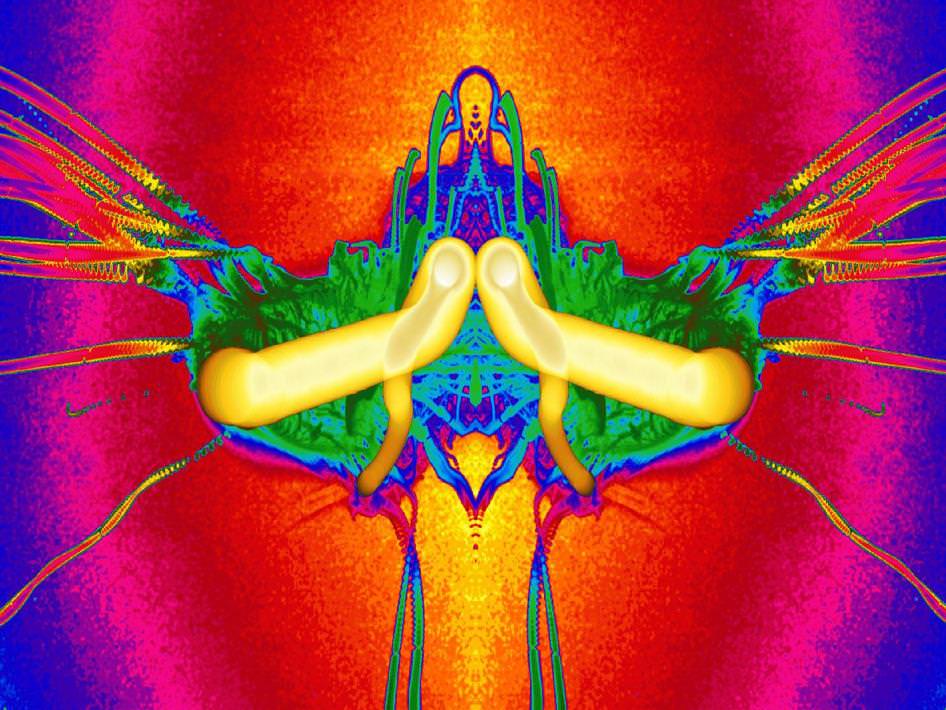[/caption]
Dude! This awesome image looks like a psychedelic 1970's flashback. But is is actually a droplet of fuel burning in space, on board the International Space Station. NASA explains that because of the absence of gravity, fuels burning in space behave very differently than they do on Earth. The Flame Extinguishing Experiment on board the ISS is examining the combustion of such liquid fuel droplets, and in this image, a 3-millimeter diameter droplet of heptane fuel burns in microgravity, producing soot. When a bright, uniform backlight is placed behind the droplet and flame and recorded by a video camera, the soot appears as a dark cloud. Image processing techniques can then quantify the soot concentration at each point in the image.
NASA explains:
This colorized gray-scale image is a composite of the individual video frames of the backlit fuel droplet. The bright yellow structure in the middle is the path of the droplet, which becomes smaller as it burns. Initial soot structures (in green) tend to form near the liquid fuel. These come together into larger and larger particles which ultimately spiral out of the flame zone in long, twisting streamers.
Far out!
Source:
NASA Image of the Day
 Universe Today
Universe Today
